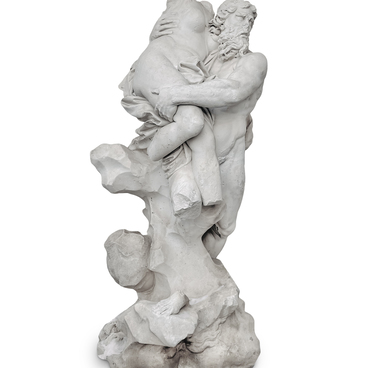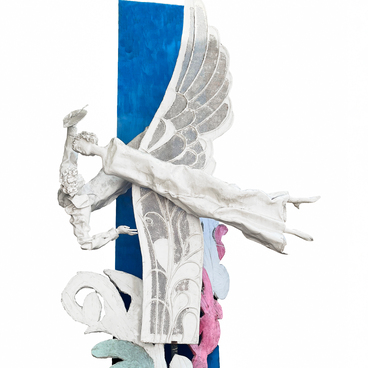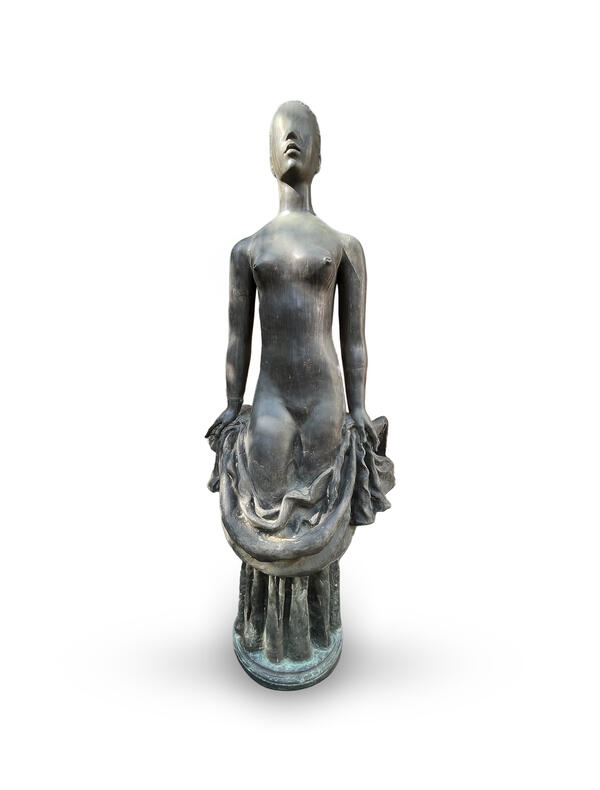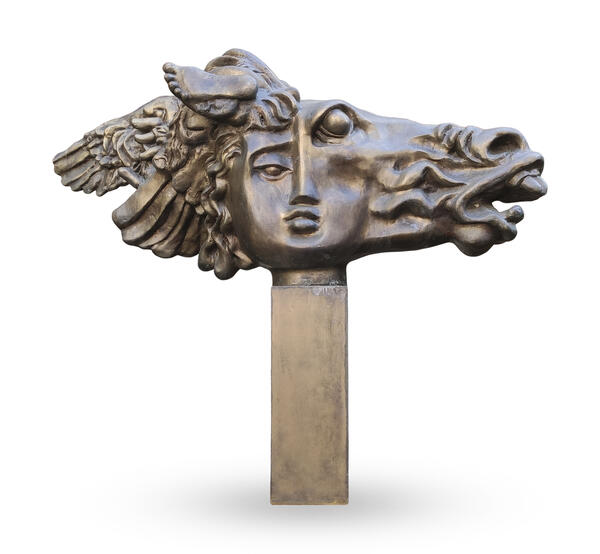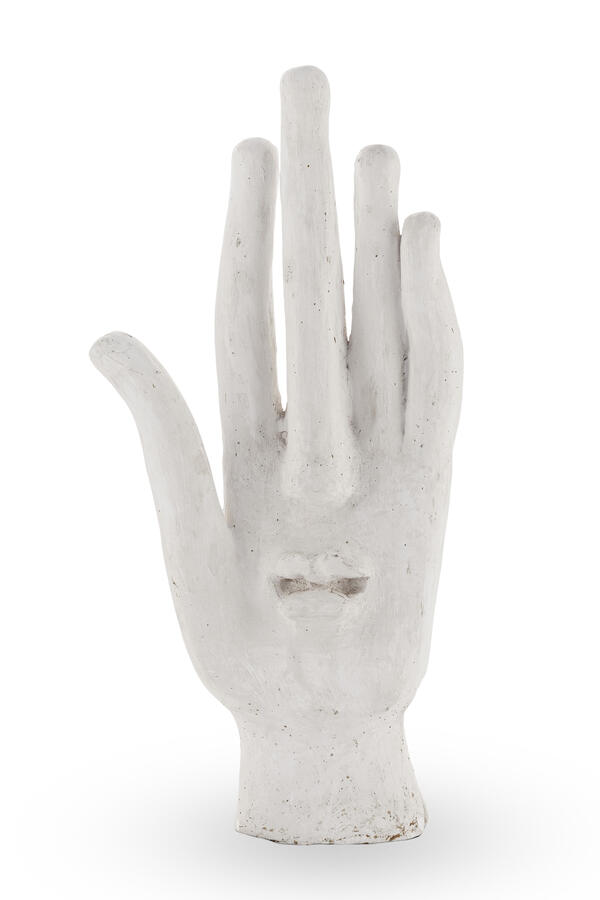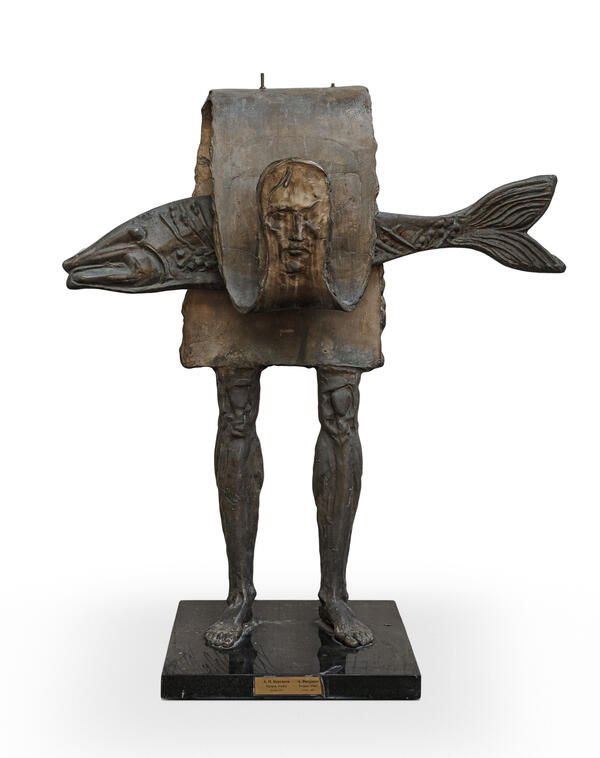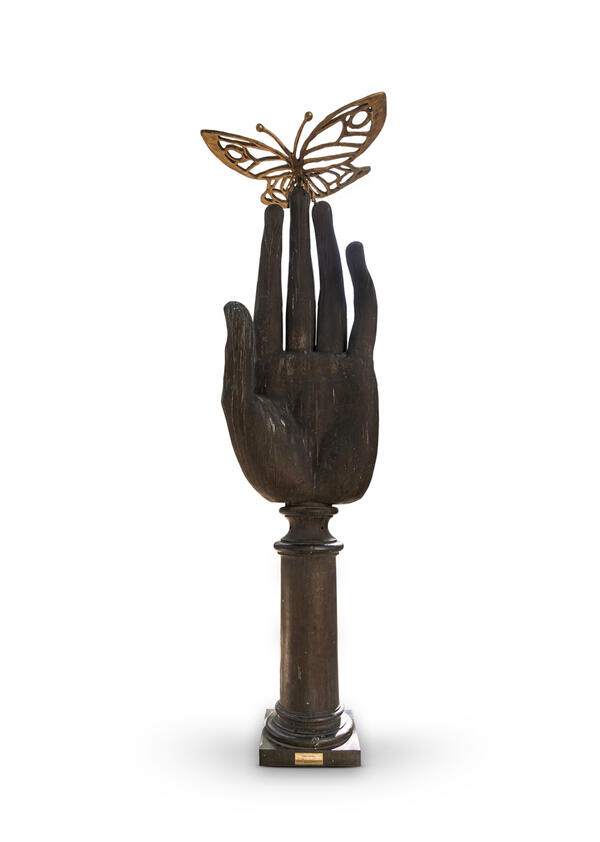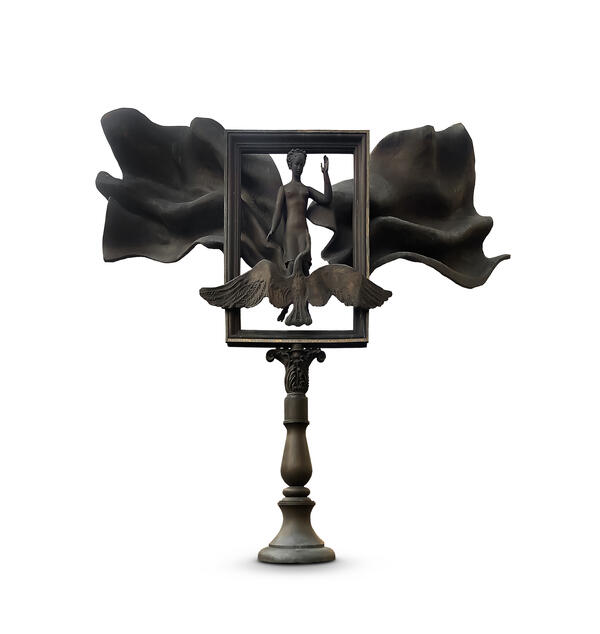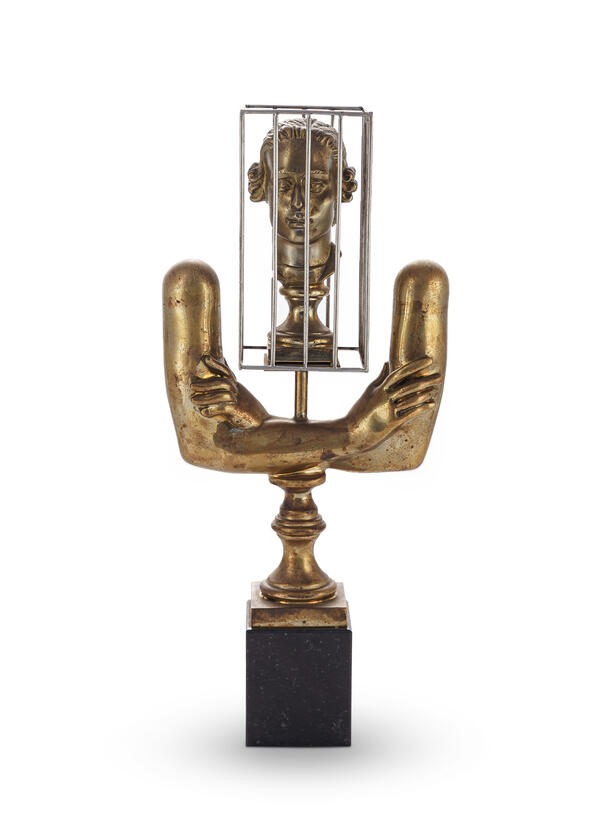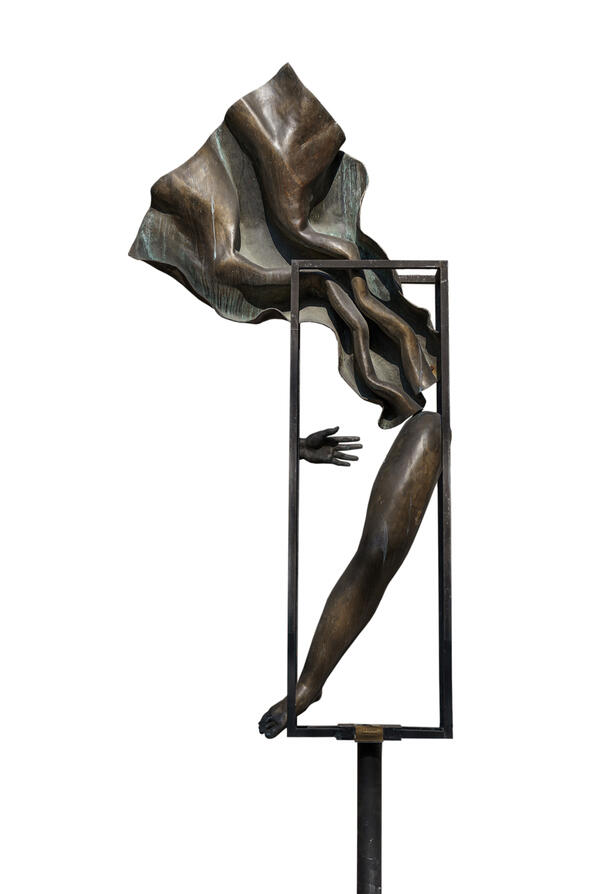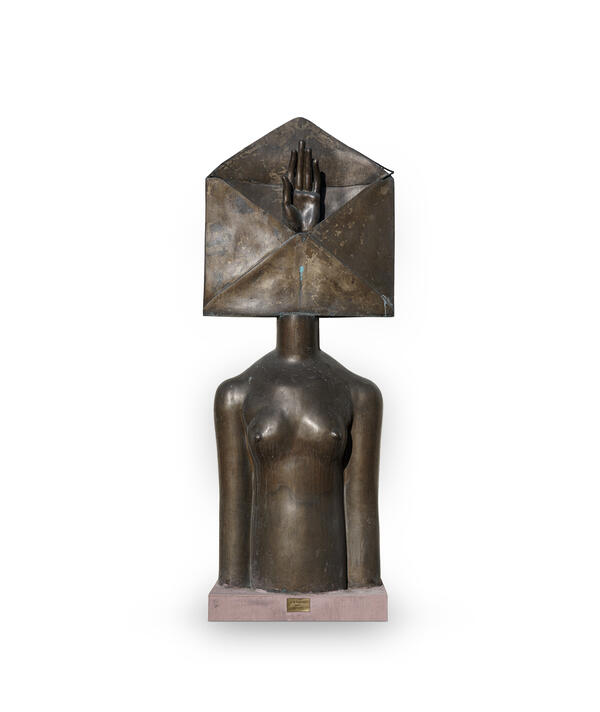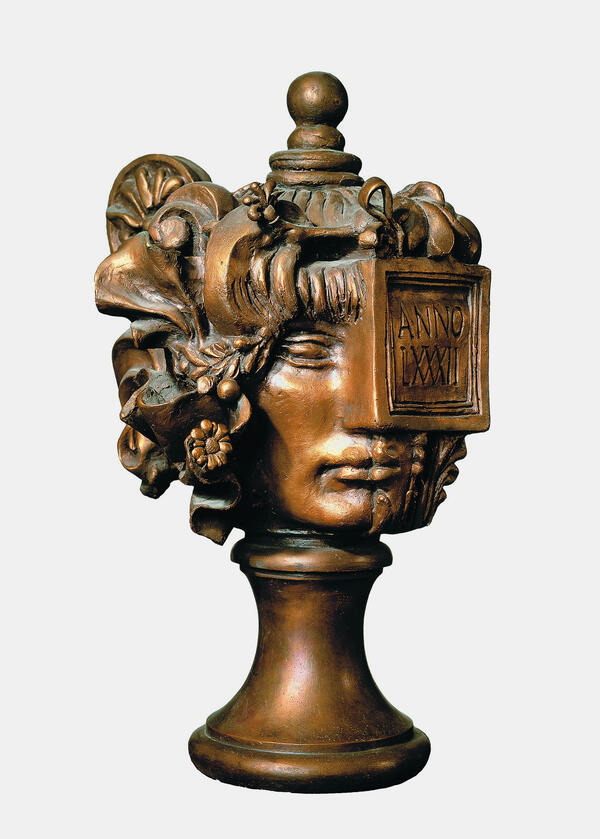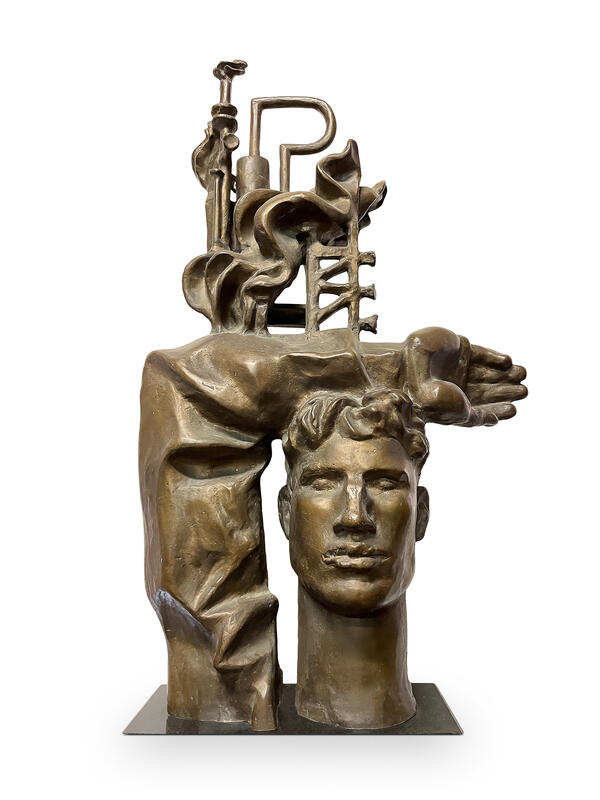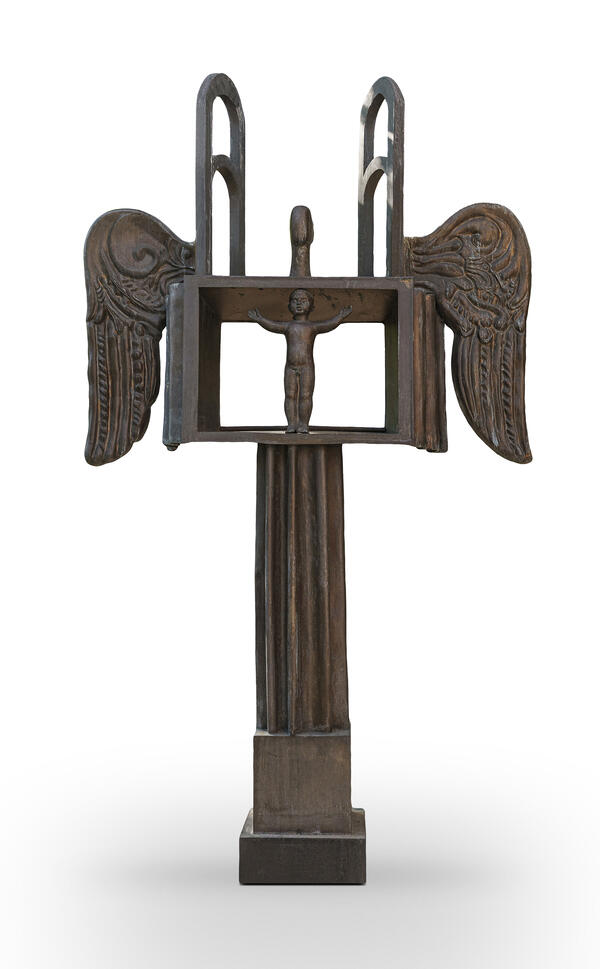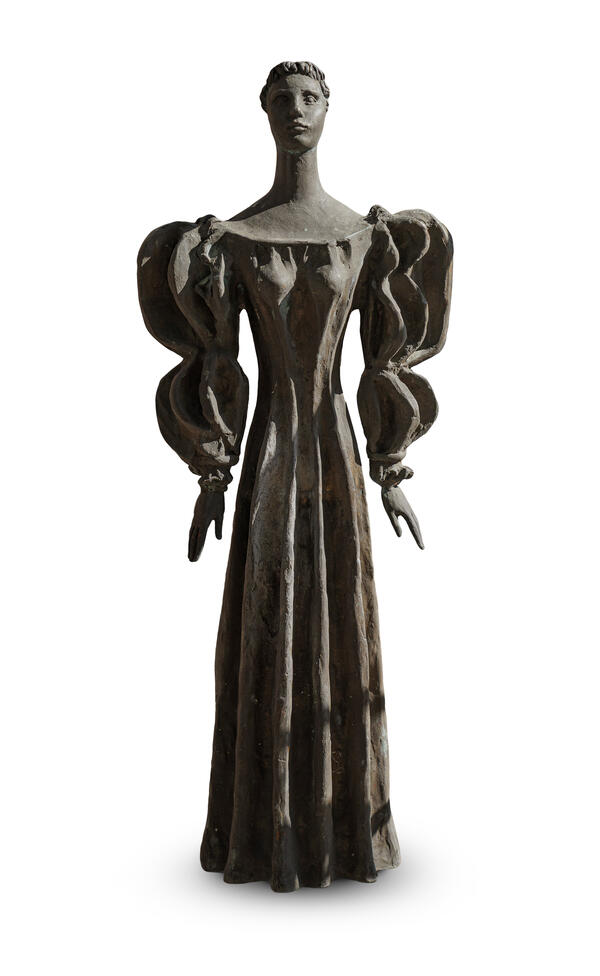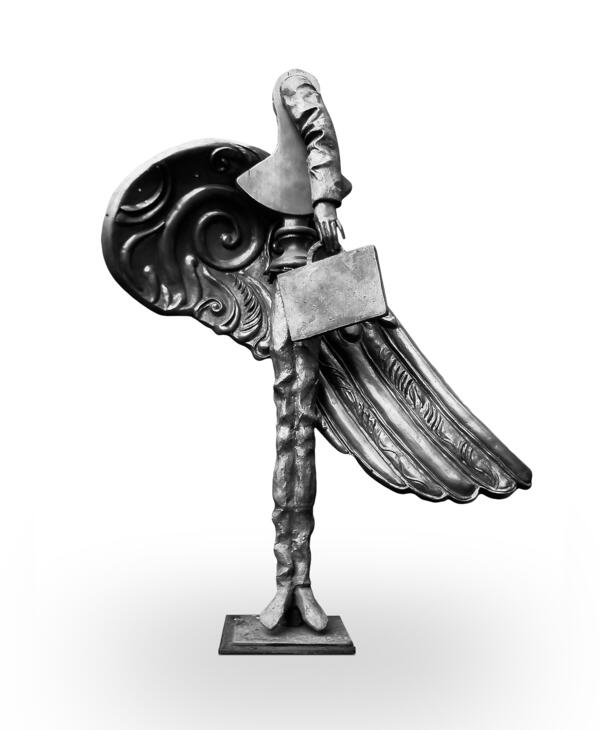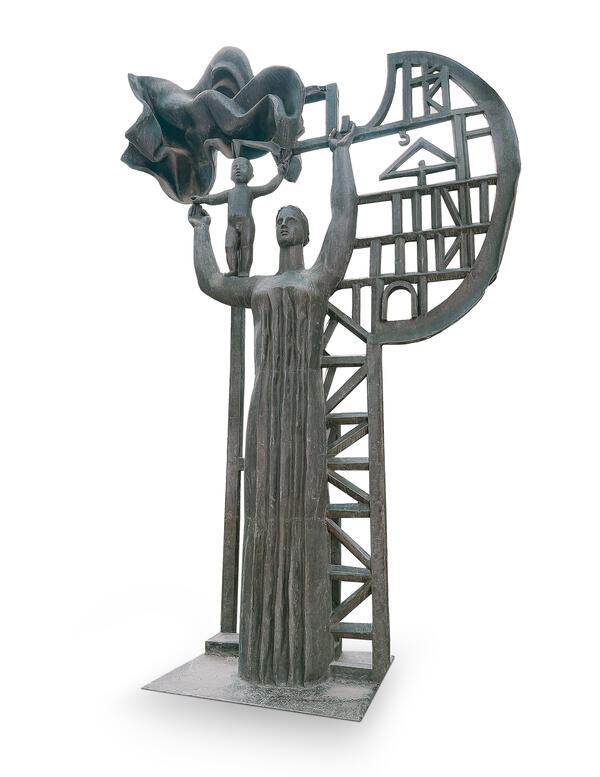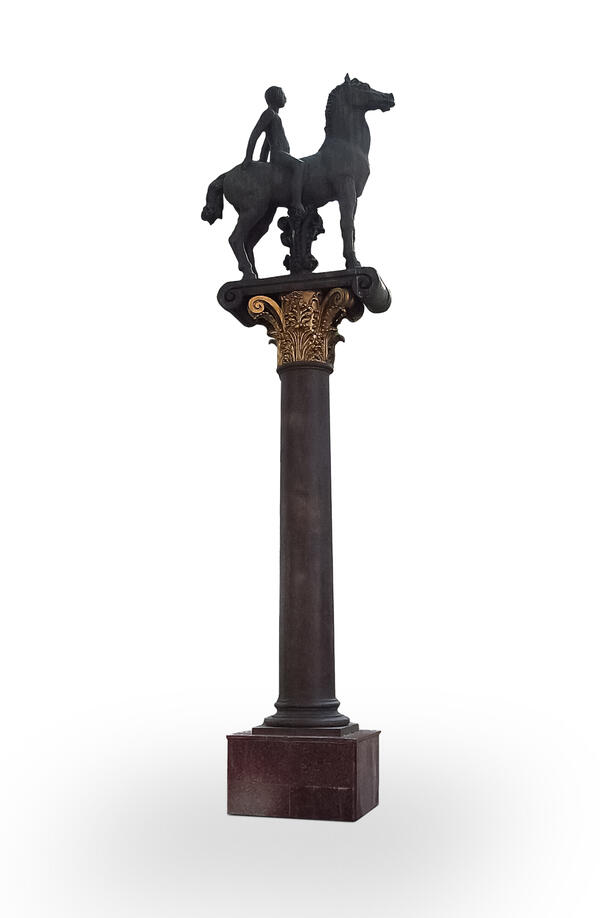The displayed sculpture has a paradoxical composition: it combines an anthropomorphic image (naked feet) and a technical object (a long pipe tied into a knot in the center). This large and minimalistic sculpture was created by Alexander Burganov as an exhibition project and was not tied to any specific environment, although it could be imagined as a park sculpture. Despite the large size, it is placed on the ground without a pedestal, which attracts the attention of visitors.
Through the unexpected and strange combination of nature and an inanimate element, the sculptor created a unique artistic image. This logical contradiction underpins the artistic method used in this work that forms the basis of the surrealistic technique.
What could this image mean? Is this about the unresolved problems of a confused person, about running and fussing? Perhaps, on the contrary, this knot connects the scattered thoughts, adds stability, and identifies unresolved issues, meaning that the solution will soon be found. Maybe this represents running away from the postulates of antiquity towards the modern times and art, while also being unable to escape the origins in art where everything is tied up in one knot and comes full circle.
There are numerous examples of paradoxical and surreal connections between animate and inanimate objects in art. In 1924, the photographer Man Ray created one of the most famous photographs of the 20th century titled “Ingres’ Violin”, in reference to the 19th-century painter. It shows a nude model from the back, with two f-holes painted on to make her body resemble a violin. This work has several meanings, including the photographer’s admiration for Ingres’ paintings, as well as memories of his famous painting “The Valpinçon Bather”, and the artist’s love for violin music.
Alexander Burganov and Man Ray shared a sense of ease and freedom when creating paradoxical and impossible combinations that fuse together to form a vivid artistic image that can be interpreted in many ways.

